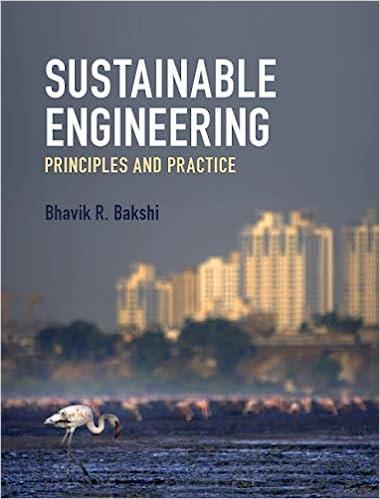Ionic liquids form a new class of solvents that are expected to be more environmentally friendly than
Question:
Ionic liquids form a new class of solvents that are expected to be more environmentally friendly than conventional solvents owing to their low volatility and high stability. Since these solvents are still being studied in research laboratories, their performance in an industrial setting is not known. However, assessing the sustainability of such emerging technologies at early stages is important to guide research and development. The photochemical ozone creation potential (POCP) in a life cycle is a function of the quantity of volatile organic compounds used in each stage. For an ionic liquid, POCP = 0.1x1 + 0.5x2 + 0.3x3 in units of kg C2H4eq. The variable x is the quantity of ionic liquid used. For the base case, the quantities of solvents used are x1 = 105 kg, x2 = 20 kg, and x3 = 1000 kg. For this case, the ionic liquid is used only once and then discarded, as is done in the laboratory. However, in an industrial setting, the ionic liquid is expected to be used up to 100 times. Calculate the effect of this uncertainty on the POCP value for the ionic liquid process. You may assume that the POCP due to additional processing in the reuse is negligible. A conventional process has a POCP of 200 kg C2H4eq. Is the ionic liquid-based process better than the conventional process in terms of life cycle POCP values?
Step by Step Answer:

Sustainable Engineering Principles And Practice
ISBN: 9781108420457
1st Edition
Authors: Bhavik R. Bakshi





